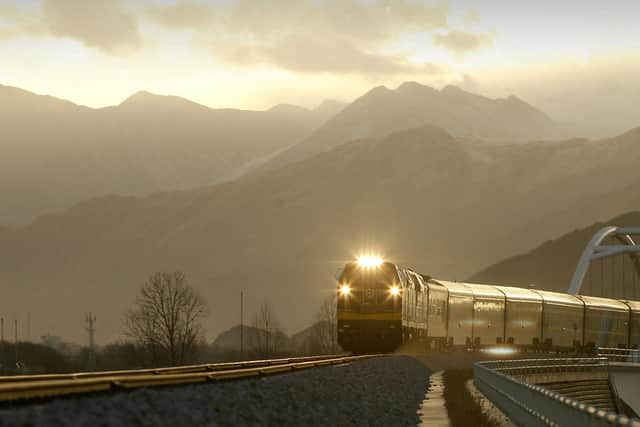Slow Travel vs Fast Travel: the difference isn’t as obvious as you'd think
Over the last few days I've been giving a lot of thought to the idea of slow travel. Over breakfast, I've been reading Jo Tinsley's new book The Slow Traveller, subtitled "An intentional path to mindful adventures", while in the evenings I've been binge-watching the first series of reality TV show Race Across the World, which I missed when it came out in 2019. As a result, my mornings have tended to begin in gentle, reflective mood, with Tinsley laying out the benefits of a mindful and unhurried approach to exploring new places, whereas in the evenings I've been getting a massive vicarious hit of adrenaline courtesy of the Race Across the World contestants, as they endeavor to travel overland from London to Singapore as quickly as possible for the price of a plane ticket, dashing between bus terminals and train stations in order to make vital connections that could potentially shave hours off their overall time.
Would I have slept better if I'd watched Race Across the World in the mornings and read Tinsley's book just before bedtime? Probably, but it's too late for that now. As a result of doing things this way round, I'm now feeling mildly frazzled due to my inability to get a decent night's sleep, and also mildly puzzled about whether there's as much difference as you might think between the kind of slow travel recommended by Tinsley and the desperate hurtling from checkpoint to checkpoint undertaken by the Race Across the World racers.
Advertisement
Hide AdAdvertisement
Hide AdIn the introduction to her book, Tinsley describes slow travel as "an invitation to explore the world at your own pace." On that basis, it's hard to see how literally racing from one point on the map to another in the hope of winning a cash prize could ever be described as "slow travel." But Tinsley goes on: "Although the name might suggest otherwise, slow travel isn't necessarily about speed or the length of your trip; it is more about deceleration and reframing travel as a journey."


Well, the Race Across the World contestants may not be big on deceleration (with 20 grand at stake, who would be?) but they certainly consider themselves to be on a journey – or, as the trailer puts it, "the journey of a lifetime." And while they may be trying to get from checkpoint to checkpoint as quickly as possible, they are – in absolute terms – slowing things right down, taking what would have been a straightforward 13-hour plane journey and spinning it out into an adventure lasting several weeks.
The further I got into Tinsley's book, and the more episodes of Race Across the World I watched, the more confused I became – not, I should stress, because Tinsley's writing isn't precise, (it is, and she's clearly given her subject a lot of thought) – but because slow travel is perhaps a more complex concept than you might imagine.
For example, Tinsley is a big advocate of long-distance train journeys, devoting an entire chapter to them. "Watching the landscape spool before your eyes," she writes, "it's hard not to feel present and in the moment." And for all the dramatic running to reach the right platform in time in Race Across the World, a substantial amount of each episode seems to consist of footage of the various contestants simply staring out of train windows, with spooling landscapes beyond. Whether or not they feel present and in the moment is never specifically stated, but, on the whole, you get the feeling they probably do.
Similarly, "The Simple Joy of Sharing Food" gets its very own chapter in Tinsley's book: "opening ourselves up to chance encounters and the kindness of strangers is at the heart of slow travel," she writes. And for all that they are supposed to be in perpetual motion, the Race Across the World contestants still find time to do this. When one of the duos, Natalie and Shameema, are travelling on a long-distance train through Uzbekistan, a handsome young local asks Shameema if he can buy her dinner in the dining car. Whether Shameema was hoping for a meaningful encounter of the kind Tinsley advocates in her book, or whether she was more concerned with saving some precious budget by getting a meal for free, we'll never know. Still: it’s another slow travel box ticked.


So, are the Race Across the World racers actually – counter-intuitively – slow travellers? Or perhaps slow travel racers? Or even fast slow travellers? There’s one passage in Tinsley’s book which suggests they may not be any of the above.
One of the guidelines or “pathways” Tinsley suggests for slow travel is “Don’t set an end goal” – and what is “get to Singapore before everyone else in order to win £20,000” if not an end goal? Tinsley goes on: “When we focus on the destination, our journeys can often become something to be endured; a means to an end.” That, I think, may be the nub of it. So perhaps no matter how many slow travel boxes the Race Across the World folks appear to tick, they are, in the end, merely slow fast travellers after all.
The Slow Traveller, by Jo Tinsley, Leaping Hare Press, £16.99
